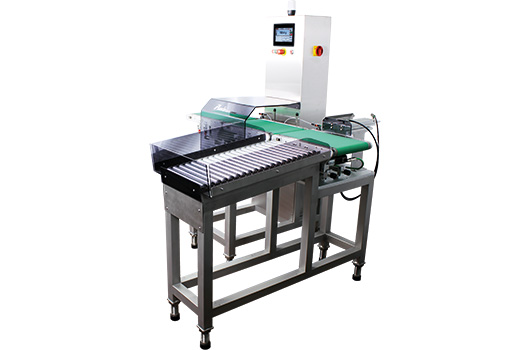The place of check weigher in the Quality System

PLACE OF CHECKWEIGHER IN THE QUALITY SYSTEM
Controlled weighing is not a standalone quality correction tool; however, with a well-designed quality control program, it becomes an effective device. CheckWeigher serves as a messaging tool providing reports about the ongoing process. Through proper maintenance and periodic testing, your CheckWeigher system ensures that none of your products reach customers or end-users with weights outside the desired range or as incomplete packages. To ensure that the CheckWeigher operates at its full potential, each factory should implement cleaning programs and maintenance measures. Some CheckWeigher manufacturers strive to maintain the top quality of their systems by contracting for maintenance measures. A CheckWeigher operating at an excellent level should allow weightless packages to continue along the production line even if zone setting parameters are incorrectly entered. Quality personnel should understand acceptable weight limit values and the required accuracy for each product and line using the CheckWeigher.
FEEDBACK, INSPECTION, AND MONITORING
CheckWeigher increasingly serves as both an input device and a feedback mechanism for statistical process control (SPC). It can count, calculate statistics, and automatically send feedback to other systems in weight-based production lines. CheckWeigher can integrate with other inspection devices such as cap detectors and metal detectors. As a control device, CheckWeigher can provide process information for ISO, customer, agent, and internal company needs. As mentioned earlier, CheckWeigher can provide information on the screen, work with its internal printer, or generate output signals for a PC-based data collection system. The control process can be synchronized with a PLC, creating an interface between a SCADA system and CheckWeigher. Today, CheckWeigher has many features for quality control and monitoring. Ensure you research all the features of your current CheckWeigher and any future CheckWeigher you intend to use for maximum benefit and value to your system and organization.
DEFINING THE REQUIRED MINIMUM ACCURACY
To guarantee that your CheckWeigher operates at its best efficiency and usability, and to ensure the proper functioning of the system, you need to determine the minimum accuracy values. The best possible accuracy may not be suitable for your application. Besides considering the environmental conditions in which the CheckWeigher will operate, you should also think about what needs to be done to transport the product. A laboratory-grade CheckWeigher may not be suitable for facilities with challenging environmental conditions or the food industry. Therefore, when purchasing a CheckWeigher, it is essential to know not only the sensitivity but also the environmental conditions and package specifications. There are two basic types of CheckWeigher applications: "FILLING" and "COUNTING." The "FILLING" type is for free-flowing or volumetric products, while "COUNTING" controls the weight of individual pieces in a fragmented product or the weight of a specific product in a package.
FILLING
Better accuracy in filling applications will mean less product waste. This concerns both the filling machine and the CheckWeigher. In the filling process, you want the best CheckWeigher accuracy for your working conditions and application. Another important factor is tare or weight change with the container. However, the filling machine is what controls the weight distribution in filling. The most efficient way to reduce product waste or percentage rejection is to reduce the standard deviation of the filling machine. Small variations in filling will bring the target weight closer to the label value.
You can reduce the standard deviation of the filling machine using the following tips:
- Use a filling machine suitable for the product.
- Ensure the filling machine is positioned in a stable location.
- Provide a steady, uniform product flow to the filling machine.
COUNTING
When counting the products in each package by weight or searching for a missing piece, you need to calculate the standard deviation of the package and its contents. The standard deviation is multiplied by three (3 * STDtotal), and it should be smaller than the value of the smallest part that can be perceived as weight. If three times the standard deviation is larger than the smallest product, you won't be able to determine if the product is in the package based on its weight. If the total variance of the packages you want to control is heavier than the smallest product, the CheckWeigher may not assist you in your application. A Gross-Net controlled weighing system can be used in conditions with the largest variation in the package. If the total variance of the package is smaller than the product weight, the accuracy of the CheckWeigher should be less than "the smallest product minus the total package weight change," i.e., <0.8*(Wcomp-3*STDtotal), where Wcomp is the weight of the smallest product. STDtotal is the standard deviation of the package and its contents. CheckWeigher accuracy (ACW) can be defined with 1, 2, or 3 standard deviations using the same formula.
